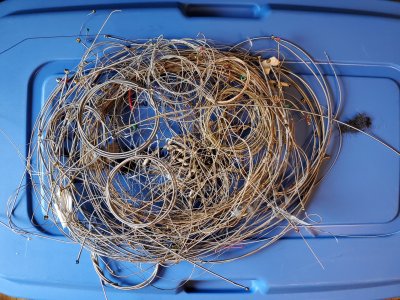I suspect there may be some guitar experts here on the forum.
I have this pile of guitar strings. Some are coiled up nicely. They were on or destined for 4 and 5 string bass, 8 string bass and 6 string guitars. Even if I sorted them all into the standard packaging I have no idea if they are any good or even worth anything.
Please help me with this.
Thanks
John
I have this pile of guitar strings. Some are coiled up nicely. They were on or destined for 4 and 5 string bass, 8 string bass and 6 string guitars. Even if I sorted them all into the standard packaging I have no idea if they are any good or even worth anything.
Please help me with this.
Thanks
John

